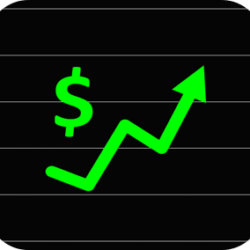Bollinger Bands
What is Bollinger Band?
&
How is it used in stock trading?
Bollinger Bands are a type of technical indicator used in stock trading to help identify potential buying and selling opportunities. They were developed by John Bollinger in the 1980s and are named after him.
The indicator consists of three lines: a simple moving average (SMA) in the middle, and an upper and lower band that are typically two standard deviations away from the SMA. The bands are used to indicate volatility in the stock’s price. When the bands are close together, it suggests that the stock’s price is relatively stable, and when the bands are far apart, it suggests that the stock’s price is more volatile.
One way to use Bollinger Bands in stock trading is to look for opportunities to buy when the stock’s price touches the lower band, and to look for opportunities to sell when the stock’s price touches the upper band. This is because when the stock’s price touches the lower band, it is considered oversold, and when the stock’s price touches the upper band, it is considered overbought.
Another way to use Bollinger Bands is to look for a breakout when the stock’s price moves outside of the bands. A breakout to the upside suggests that the stock’s price is likely to continue to rise, while a breakout to the downside suggests that the stock’s price is likely to continue to fall.
It’s worth noting that Bollinger Bands are not a standalone indicator and is best used in conjunction with other technical indicators and analysis to identify potential trading opportunities. Also, Bollinger Bands are not always accurate and can produce false signals, so it’s essential to use them in combination with other forms of analysis and to keep a strict risk management strategy in place.
Bollinger Bands have both advantages and disadvantages as a technical indicator in stock trading.
Pros:
- They help identify potential buying and selling opportunities by showing the volatility of a stock’s price.
- They can be used to identify overbought and oversold conditions in the market.
- They can be used to identify potential breakouts in the stock’s price.
- They are relatively simple to understand and use.
- They can be used in conjunction with other technical indicators for a more comprehensive analysis.
Cons:
- They can produce false signals, so it’s essential to use them in combination with other forms of analysis.
- They are based on past data and may not always accurately predict future price movements.
- They do not take into account fundamental factors that may affect a stock’s price, such as company performance or economic conditions.
- They can be affected by market volatility and may not be as useful in volatile market conditions.
- They do not indicate the strength or weakness of the trend.
It’s important to keep in mind that Bollinger Bands are just one tool among many that traders can use to analyze the market and make trading decisions. It’s essential to use Bollinger Bands in conjunction with other forms of analysis and to keep a strict risk management strategy in place. Additionally, it’s essential to be aware of the limitations of the indicator and not to rely solely on it to make trading decisions.
In conclusion, Bollinger Bands are a useful tool for stock traders to help identify potential buying and selling opportunities by showing the volatility of a stock’s price. However, as with all technical indicators, it should not be relied upon solely and should be used in conjunction with other forms of analysis and a strict risk management strategy.
Share Predictions mobile app provides variety of technical indicators, including Bollinger Bands, for both common stocks and ETFs from stock markets in USA. You can view and analyze trends on the chart and easily identify potential bullish and bearish signals based on these indicators when doing your technical analysis.





